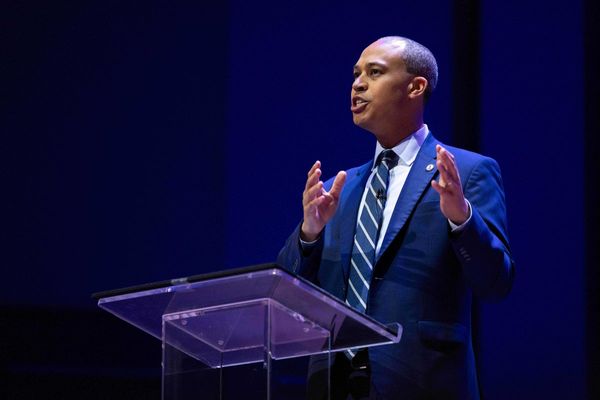May 29 is 529 Day. It's a good time to boost awareness of these college savings plans. So, grab a highlighter and go back to school on 529 plans.
Like any subject, there's probably a lot you don't know about the benefits and increasing flexibility of these savings accounts. And some new perks for 529s make them even more appealing.
Let's start with a 529 Savings Plan 101 course primer that ticks off features of 529s you're likely aware of. The dollars accumulated in these accounts can be set up for beneficiaries such as children and grandchildren. The funds can pay for educational expenses, such as tuition, fees and room-and-board.
529s also enjoy friendly tax treatment. Contributions grow tax deferred. And you won't pay a penny in taxes for withdrawals for qualified educational expenses. In some states you might also get a tax break. So, there's a chance you could get a triple-tax benefit, says Andrew Kadjeski, head of brokerage and investments at Vanguard.
"These are incredibly tax-advantaged investment vehicles," said Kadjeski.
What Makes 529 Plans So Attractive
And you know that the earlier you start saving in 529 accounts the better. It provides more time for the money to grow and benefit from compounding.
But it's what you may not know about 529s that makes them even more attractive. 529s are not just for four-year colleges.
"A common myth is I should only invest in a 529 if my kid is going to go to a traditional undergraduate college or university," said Kadjeski.
The list of uses for 529 account balances is much longer.
Many Uses Of 529 Plans
Up to $10,000 per year per beneficiary in 529 funds, for example, can be used to pay for private school costs from kindergarten through 12th grade. And funds can also be used for beneficiaries who attend eligible vocational, or "trade" schools. These schools teach students skills such as how to be an HVAC technician, electrician or dental hygienist. Even apprenticeships, eligible community colleges, graduate school and study abroad programs can be funded with 529s.
529 beneficiaries can also use money in the account to pay off a portion of their student loans. There's a $10,000 lifetime cap, however.
"The flexibility of what you can use a 529 for is a huge, huge benefit," said Kadjeski.
FAFSA Change Improves Financial Aid Calculations
A recent change in the Free Application for Federal Student Aid (FAFSA) makes it even more appealing for grandparents to set up their own 529s for their grandkids, says Roger Young, senior financial planner at T. Rowe Price.
Starting with the 2024-2025 academic year, any 529 dollars used to pay for a grandchild's tuition or educational costs will no longer be counted as student income. Under the old rules, distributions from grandparent-owned 529 plans were reported as untaxed student income, according to Saving for College.
"That was pretty punitive in terms of the financial aid calculation for the student," said Young. "But now that's no longer the case."
529s Have Estate Planning Benefits
Funding college via a 529 is more about helping the beneficiary get a good education. It can also be part of an estate planning strategy.
Case in point: the IRS treats contributions to a 529 as gifts. Contributions may be subject to a federal gift tax. However, the first $18,000 put toward a beneficiary's 529 in 2024 (or $36,000 for a married couple) is excluded from gift taxation. So, parents or grandparents who contribute to a 529 can leave a legacy. That legacy is in the form of an education as well as reduce the dollar amount of their estate.
And under a special rule, you can contribute $90,000 in a single year ($180,000 for a married couple). You apply the contribution as if it were spread over a five-year period. This so-called super-funding option also won't reduce your lifetime gift tax exemption. For 2024, the lifetime gift tax exemption is $13.61 million.
"The magnitude of this gift is useful for someone potentially subject to an estate tax later, as it reduces the size of your taxable estate," said Young. And it often makes financial sense to get these funds out of your estate sooner rather than later because you're also benefiting from the future growth of the funds in the 529, adds Young.
Grandparents 73 years or older can also use their annual required minimum distributions as a gift source and contribute to their grandchild's 529, according to The Education Plan, a 529 plan sponsored by New Mexico. The benefit is twofold: the grandparent can lower the value of his or her estate. Additionally, dollars shifted into the beneficiary's 529 will again benefit from tax-deferred growth and tax-free withdrawals.
529 Plans Can Fund Retirement, Too
529 plans help people save for college. But there's a new rule in place that goes further. It enables some of the dollars sitting in the 529 account to fund the 529 beneficiary's retirement. Thanks to the SECURE 2.0 Act, starting in 2024, you can roll over unused 529 assets into the account beneficiary's Roth IRA. And you can do it without incurring the 10% non-qualified withdrawal penalty or generating any taxable income.
There's a lifetime limit of $35,000, however. The maximum Roth IRA contribution in 2024 is $7,000. That means you'll need to make these rollovers over a course of five years if you have the max $35,000 that's eligible to roll over.
"SECURE 2.0 has given 529s even more flexibility if the money isn't needed for education," said Kadjeski. "You're able to use that money to give your (child or grandchild) a head start to contribute to the number one financial goal that investors have, and that is saving for retirement."
Max Out 529 Plan Perks
The ability to convert unused funds from a 529 to a Roth IRA also enables the beneficiary to extend the tax advantages of the 529 further into the future.
This perk also does away with anxiety people had over what to do with extra money left over in the account or if the beneficiary opted not to go to college. In fact, 18% said a common concern related to 529 plans is that they "believe funds will go unused if a child does not pursue higher education," according to a Vanguard study. In contrast, 75% of respondents said the "most compelling" feature of a 529 plan is "unused funds being rolled over into a Roth IRA for their child."
"It reduces the anxiety of worrying about putting too much into the 529," said Young.
Still, there are rules to follow to do the Roth IRA rollover. To do the rollover, the IRS requires that the account be open for at least 15 years. And contributions (and any earnings) made to the 529 in the last five years before distributions start are not eligible for rollover. The rollover can't exceed the maximum IRA contribution allowed in any given year. Finally, the beneficiary of the 529 must also be the owner of the Roth IRA and have enough earned income at least equal to the rollover amount.
Moving Money Around
And when it comes to account flexibility, 529 plan rules allow you to transfer an account balance from one beneficiary to another. That might be moving the funds to a younger child after your older child graduates from college. And say your child doesn't attend college. Then, the 529 account holder can also keep investing in the 529. The 529 fund can then pass to a grandchild.
Generally speaking, T. Rowe Price advises families to attempt to fund 50% of a college's sticker price via 529 plans. Given the current average cost of college, you'll need to sock away $260 per month starting when your child is born to meet that 50% goal, according to Young.
"Starting early gives you a reasonable hope of getting to that 50% of sticker-price target," said Young.







